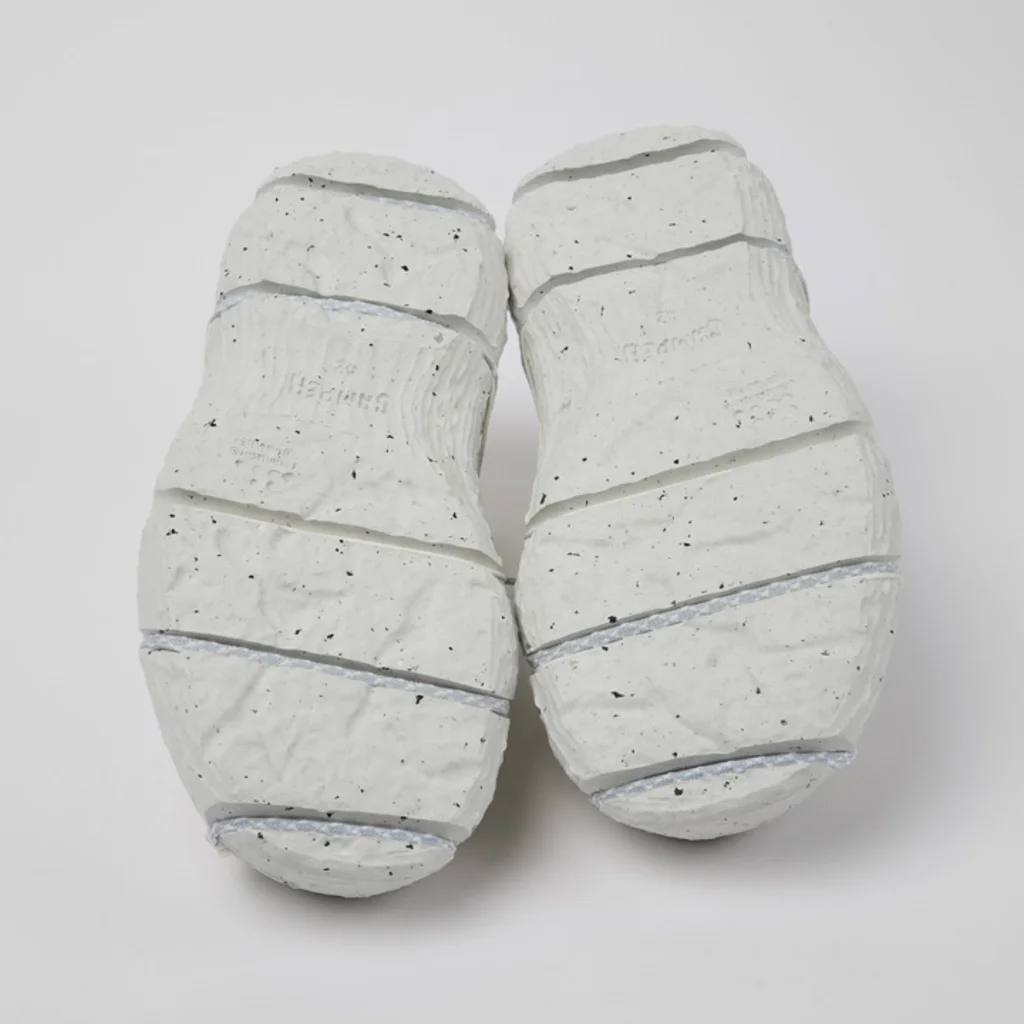HOW THE MODULAR SHOE WAS DESIGNED FOR DISASSEMBLY
The shoe, called the Roku, comes in six interchangeable parts. The biggest design challenge: finding a way to securely attach the sole without using any glue. One of the designers realized that it would be possible to create channels in both the sole and the upper part of the shoe so thick laces could help hold the parts together. “It was something very simple, but it took us a while to find this hack,” Horčíková says.
The shape of each piece of the shoe fits together like “a kind of sandwich,” which helps attach it securely, Horčíková says. “So we were thinking, Okay, the footbed goes inside the lining, and not the other way around. Then the outsole goes on top of the lining, and the upper around the outside.” The weight of the person wearing the shoe helps connect the parts.
The assembly process is actually simpler than gluing on a sole, which takes as many as eight steps, from preparing the sole with chemicals and warming it up to fixing it in a pressure machine.


A DIY OPTION
The design team worked to make the assembly and disassembly process simple enough that customers could do it themselves. You can buy the shoes in their final form or buy separate components, so it’s possible to create dozens of color combinations.
In theory, if customers choose to assemble their own shoes, they may have more of an emotional attachment to them and be more likely to keep them longer. “Personally, I feel that way—if I care about something, I don’t want to throw it away, and I want to use it as much as possible,” Horčíková says. “The problem is that people throw away too many things and keep buying more.”

A MODEL FOR DESIGNING OTHER SHOES
The shoe has other sustainable features, including its minimal use of materials. “When you work on modularity, it always ends up needing to be simplified,” Horčíková says. “You try to avoid pieces you don’t need, and then you really focus on quality and the use of each component of the shoe.”
The upper part of the shoe is 3D-knit, so it uses a precise amount of thread with no waste. (That’s in contrast to a traditional leather or canvas sneaker that’s cut in pieces and sewn together.) The sole is partially made from scraps at the factory that produces it.
But the change in how the shoe is constructed is the most innovative part, Horčíková says, and it’s already inspiring other shoe designs at the brand.
Author: Adele Peters
Article source and images: https://www.fastcompany.com/91088950/campers-modular-sneakers-designed-for-repair-and-recycling



